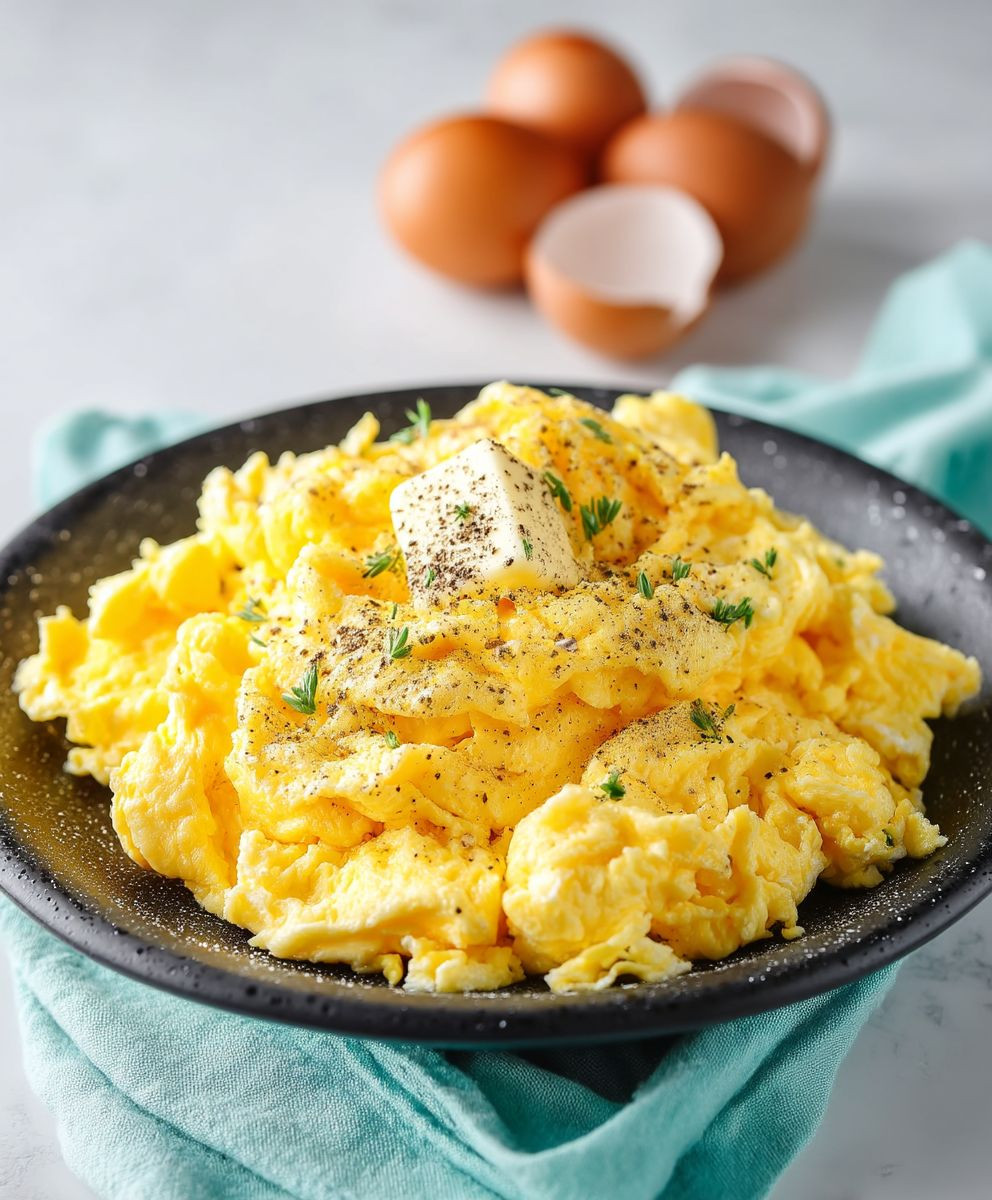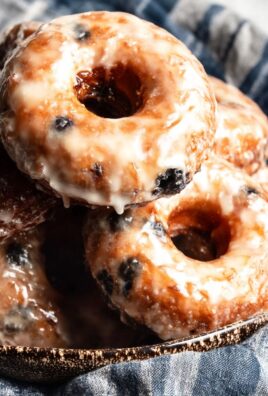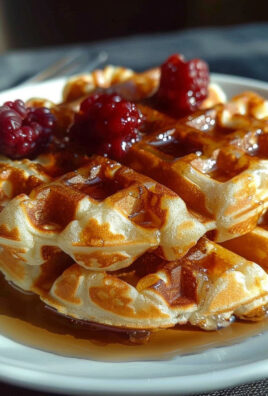Fluffy scrambled eggs: Is there anything more comforting and satisfying to start the day? I think not! Imagine a plate piled high with creamy, light-as-air scrambled eggs, glistening with butter and seasoned to perfection. It’s a breakfast staple that transcends generations and cultures, a simple pleasure that never fails to delight.
While the exact origins of scrambled eggs are debated, their popularity stretches back centuries. Variations appear in cookbooks from around the world, each culture adding its own unique twist. But the core principle remains the same: transforming humble eggs into a culinary masterpiece.
What is it about fluffy scrambled eggs that makes them so universally loved? Perhaps it’s the incredibly satisfying texture – a delicate dance between creamy and airy. Or maybe it’s the sheer versatility; they’re equally delicious on their own, nestled in a breakfast sandwich, or as a side to a more elaborate brunch spread. And let’s not forget the convenience! Scrambled eggs are quick and easy to prepare, making them the perfect choice for busy mornings or a last-minute weeknight dinner. So, are you ready to learn my secret to achieving the fluffiest scrambled eggs you’ve ever tasted? Let’s get cooking!
Ingredients:
- 6 large eggs
- 2 tablespoons milk or cream (whole milk preferred for richness)
- 1 tablespoon butter, unsalted
- Salt and freshly ground black pepper to taste
- Optional: 1 tablespoon chopped fresh chives or parsley for garnish
- Optional: A pinch of garlic powder or onion powder
- Optional: 1/4 cup shredded cheese (cheddar, Gruyere, or Monterey Jack work well)
Preparing the Egg Mixture:
- Crack the eggs into a bowl: Gently crack all six eggs into a medium-sized bowl. Be careful not to get any shell fragments in the bowl. If you do, use a piece of eggshell to scoop them out – it works better than your fingers!
- Whisk the eggs: Use a whisk to thoroughly beat the eggs. You want to break up the yolks and whites completely, creating a uniform, pale yellow mixture. Don’t just stir; really whisk! This incorporates air, which will contribute to the fluffiness of the final product. Whisk for about 1-2 minutes until the mixture is light and frothy.
- Add the dairy: Pour in the milk or cream. The dairy adds moisture and richness, preventing the eggs from drying out during cooking. Whole milk will give you the richest, creamiest results, but you can use 2% or even skim milk if you prefer a lighter option. Cream will make them extra decadent.
- Season the mixture: Add salt and pepper to taste. Be careful not to over-salt, as the flavor will intensify during cooking. A good starting point is about 1/4 teaspoon of salt and a pinch of pepper. You can always add more later. If you’re using garlic or onion powder, add a small pinch of either now.
- Whisk again: Whisk the mixture again for about 30 seconds to ensure the dairy and seasonings are fully incorporated. The mixture should be smooth and slightly frothy.
- Optional: Let the mixture rest: For even fluffier eggs, let the egg mixture rest for 5-10 minutes at room temperature. This allows the air bubbles to stabilize, resulting in a lighter texture. This step is optional, but I highly recommend it if you have the time.
Cooking the Scrambled Eggs:
- Prepare the pan: Place a non-stick skillet over medium-low heat. This is crucial! High heat will result in dry, rubbery eggs. The key to fluffy scrambled eggs is low and slow cooking.
- Melt the butter: Add the butter to the skillet and let it melt completely. Swirl the pan to coat the entire surface with butter. The butter prevents the eggs from sticking and adds flavor.
- Pour in the egg mixture: Once the butter is melted and the pan is heated, pour the egg mixture into the skillet.
- Cook slowly and gently: Let the eggs sit undisturbed for about 30 seconds, allowing a thin layer to set on the bottom.
- Begin to stir: Using a silicone spatula, gently push the cooked egg from the edges of the pan towards the center. As you push the cooked egg, tilt the pan to allow the uncooked egg to flow underneath.
- Continue stirring: Continue this process of pushing and tilting, gently stirring the eggs, until they are mostly cooked but still slightly wet and creamy. This should take about 2-3 minutes. The eggs should look soft and billowy, not dry and crumbly.
- Optional: Add cheese: If you’re using cheese, sprinkle it over the eggs during the last minute of cooking. Allow the cheese to melt slightly.
- Remove from heat: Take the skillet off the heat just before the eggs reach your desired consistency. They will continue to cook from the residual heat.
- Serve immediately: Serve the scrambled eggs immediately while they are still warm and fluffy.
Serving and Garnishing:
- Plate the eggs: Spoon the scrambled eggs onto plates.
- Garnish (optional): Sprinkle with chopped fresh chives or parsley for a pop of color and flavor.
- Serve with your favorite sides: Scrambled eggs are delicious on their own, but they are also great with toast, bacon, sausage, avocado, or fresh fruit.
- Enjoy! Savor the creamy, fluffy texture and delicious flavor of your perfectly scrambled eggs.
Tips for Extra Fluffy Scrambled Eggs:
- Don’t overcook: Overcooked eggs are dry and rubbery. The key to fluffy eggs is to cook them low and slow, and to remove them from the heat while they are still slightly wet.
- Use a non-stick skillet: A non-stick skillet will prevent the eggs from sticking and make them easier to cook.
- Don’t overcrowd the pan: If you’re making a large batch of scrambled eggs, cook them in batches to avoid overcrowding the pan. Overcrowding will lower the temperature of the pan and result in unevenly cooked eggs.
- Use fresh eggs: Fresh eggs will have a better flavor and texture than older eggs.
- Don’t add water: Some people add water to their scrambled eggs, but this can make them watery and less flavorful. Milk or cream is a better option for adding moisture.
- Experiment with different flavors: Scrambled eggs are a blank canvas, so feel free to experiment with different flavors and ingredients. Try adding different herbs, spices, cheeses, or vegetables.
- Whisk vigorously: Whisking the eggs vigorously incorporates air, which helps to create a light and fluffy texture.
- Low and slow is the way to go: I can’t stress this enough! Patience is key.
Troubleshooting:
- Eggs are too dry: You probably overcooked them. Next time, remove them from the heat a little earlier. Also, make sure you’re using enough dairy.
- Eggs are too watery: You might have added too much milk or cream. Reduce the amount next time. Also, make sure you’re not cooking them at too high of a heat, which can cause the eggs to release moisture.
- Eggs are sticking to the pan: Make sure you’re using a non-stick skillet and that you’ve greased it well with butter. Also, don’t cook the eggs at too high of a heat.
- Eggs are rubbery: You definitely overcooked them. Low and slow is the key!
Variations:
- Cheese Scrambled Eggs: Add your favorite shredded cheese (cheddar, Gruyere, Monterey Jack) during the last minute of cooking.
- Herb Scrambled Eggs: Add chopped fresh herbs (chives, parsley, dill) to the egg mixture before cooking.
- Vegetable Scrambled Eggs: Sauté your favorite vegetables (onions, peppers, mushrooms, spinach) before adding the egg mixture.
- Spicy Scrambled Eggs: Add a pinch of red pepper flakes or a dash of hot sauce to the egg mixture.
- Western Scrambled Eggs: Add diced ham, onions, and peppers to the egg mixture.
- Greek Scrambled Eggs (Strapatsada): Sauté diced tomatoes and feta cheese, then add the egg mixture and cook until set.
This recipe is a great starting point, but feel free to adjust it to your own preferences. The most important thing is to have fun and experiment! Happy cooking!
Conclusion:
So, there you have it! These aren’t just any scrambled eggs; they’re fluffy scrambled eggs elevated to a whole new level of deliciousness. The secret, as you now know, lies in the low and slow cooking method, the addition of a touch of cream cheese, and that all-important whisking technique. Trust me, once you’ve tasted the difference, you’ll never go back to your old way of making them.
But why is this recipe a must-try? Well, beyond the incredible texture and flavor, it’s incredibly versatile and quick to prepare. On busy weekday mornings, these eggs are a lifesaver, providing a protein-packed and satisfying start to the day. And on lazy weekend brunches, they feel like a truly indulgent treat. It’s a win-win!
Now, let’s talk serving suggestions and variations. While these fluffy scrambled eggs are fantastic on their own, they also pair beautifully with a variety of accompaniments. For a classic breakfast, serve them alongside crispy bacon or sausage, toasted sourdough bread, and a dollop of your favorite jam. If you’re feeling a bit more adventurous, try adding some chopped chives, fresh dill, or a sprinkle of red pepper flakes for a pop of flavor.
Looking for some more substantial variations? Consider stirring in some sautéed mushrooms and spinach for a healthy and flavorful twist. Or, for a truly decadent experience, add some crumbled goat cheese or a drizzle of truffle oil. You could even incorporate some smoked salmon for a sophisticated brunch option. The possibilities are truly endless!
And don’t forget about presentation! A simple garnish of fresh parsley or a sprinkle of paprika can elevate the visual appeal of your dish. Serve the eggs in a warm bowl or on a plate lined with fresh greens for a restaurant-worthy presentation.
I truly believe that this recipe for fluffy scrambled eggs will become a staple in your kitchen. It’s simple, satisfying, and guaranteed to impress. It’s more than just a recipe; it’s a technique that will transform your breakfast game forever.
So, what are you waiting for? Grab your whisk, your eggs, and your favorite ingredients, and get cooking! I’m confident that you’ll love the results. And more importantly, I’d love to hear about your experience. Did you try any of the variations I suggested? Did you add your own unique twist?
Please, don’t hesitate to share your thoughts and photos in the comments below. I’m always eager to learn from my readers and see how you’re making this recipe your own. Your feedback is invaluable and helps me to create even better recipes in the future.
Happy cooking, and I hope you enjoy every delicious bite of these perfectly fluffy scrambled eggs! Let me know what you think! I can’t wait to hear from you.
Fluffy Scrambled Eggs: The Ultimate Guide to Perfect Eggs
Fluffy, creamy scrambled eggs cooked low and slow for the perfect breakfast or brunch. Customize with your favorite cheeses, herbs, or vegetables!
Ingredients
Instructions
Recipe Notes
- Don’t overcook: Overcooked eggs are dry and rubbery. The key to fluffy eggs is to cook them low and slow, and to remove them from the heat while they are still slightly wet.
- Use a non-stick skillet: A non-stick skillet will prevent the eggs from sticking and make them easier to cook.
- Don’t overcrowd the pan: If you’re making a large batch of scrambled eggs, cook them in batches to avoid overcrowding the pan. Overcrowding will lower the temperature of the pan and result in unevenly cooked eggs.
- Use fresh eggs: Fresh eggs will have a better flavor and texture than older eggs.
- Don’t add water: Some people add water to their scrambled eggs, but this can make them watery and less flavorful. Milk or cream is a better option for adding moisture.
- Experiment with different flavors: Scrambled eggs are a blank canvas, so feel free to experiment with different flavors and ingredients. Try adding different herbs, spices, cheeses, or vegetables.
- Whisk vigorously: Whisking the eggs vigorously incorporates air, which helps to create a light and fluffy texture.
- Low and slow is the way to go: I can’t stress this enough! Patience is key.






Leave a Comment